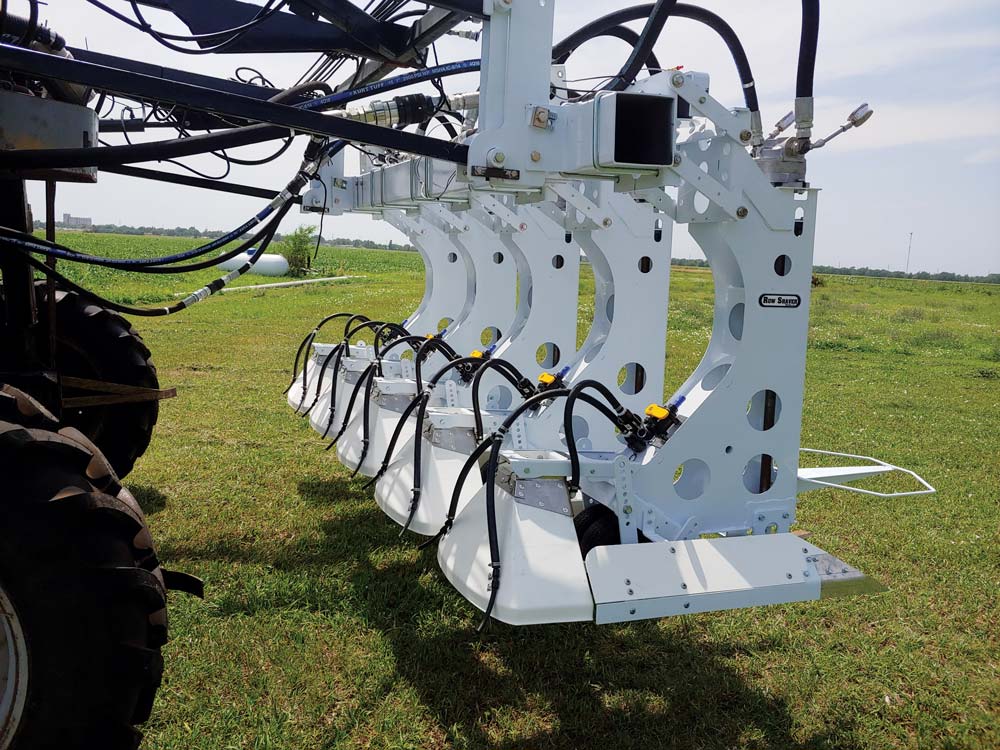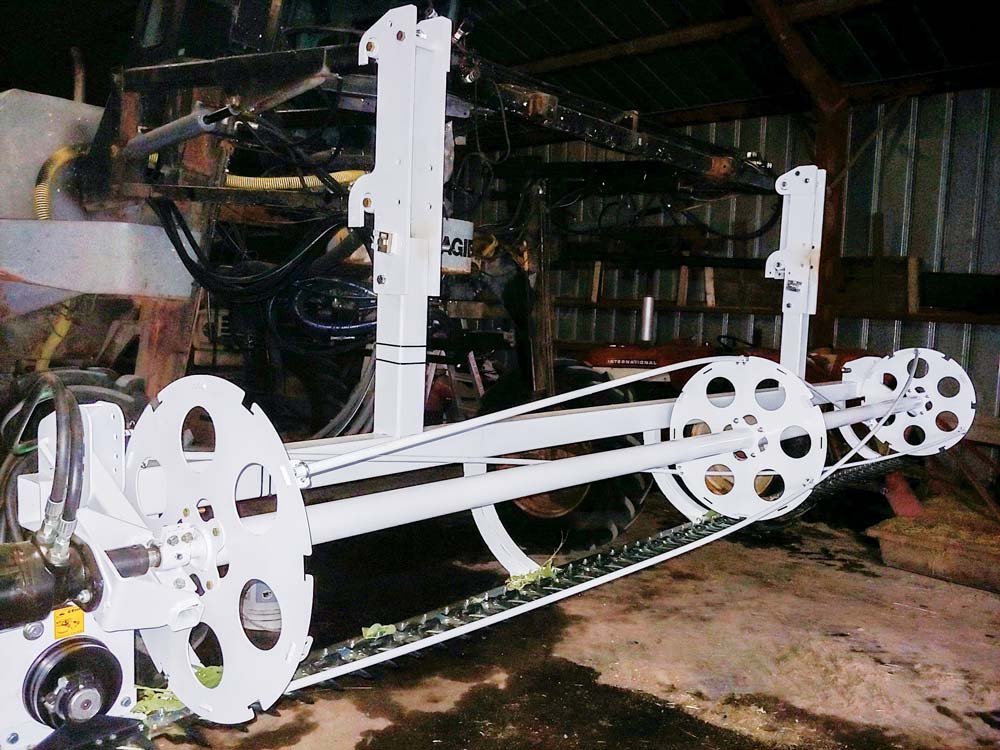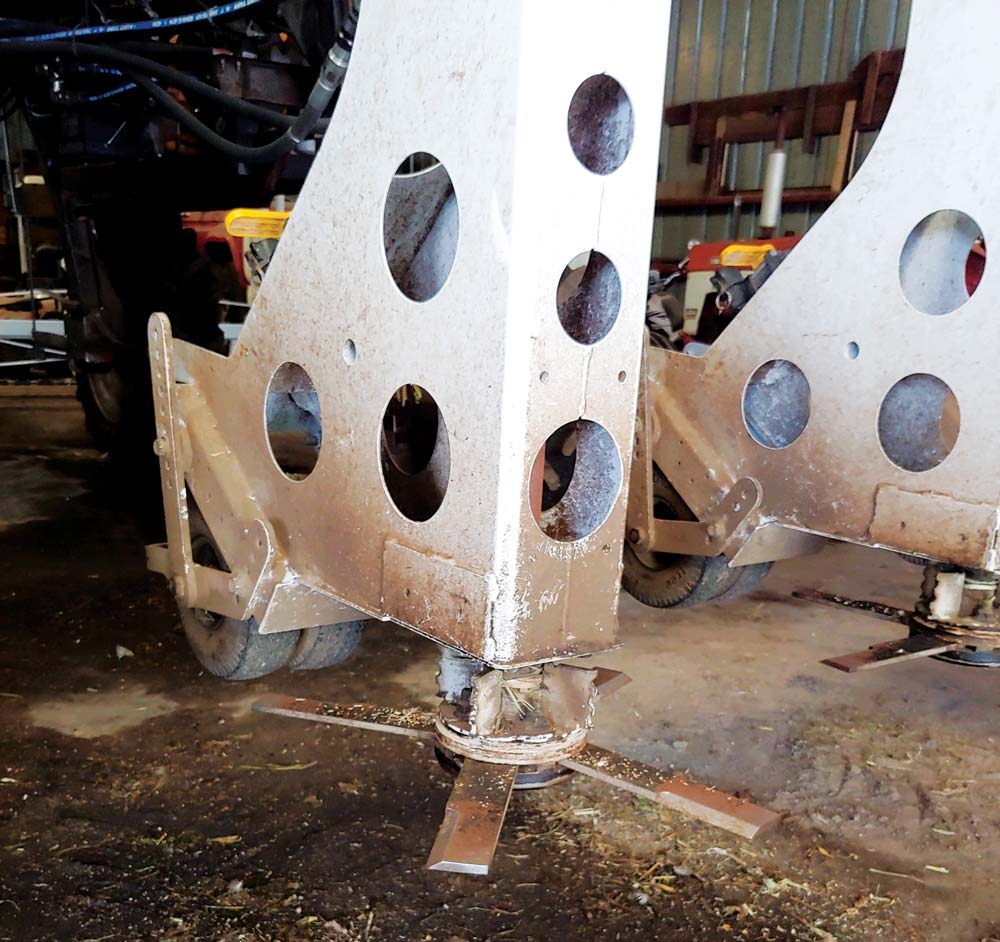Since readers of No-Till Farmer (a sister publication of Farm Equipment) first read of Dave Button’s Row Shaver System in a 2018 article on sprayer modifications, farmer/inventor Dave Button, from Great Bend, Kan., has been hard at work testing, tweaking and re-engineering his two-pronged mechanical weed-control system and believes it’s now ready for prime time on commercial sprayers.
“Weeds can’t grow resistant to steel,” Button explains, citing his company’s motto. “Rather than tilling or cultivating the soil to remove herbicide-resistant weeds and losing valuable soil moisture and crop yield, we mount hydraulically-operated mower assemblies on the front of sprayer row units.
“Mowing the weeds in the middles reduces competition for adjacent cash crops, and allows them to canopy over the mowed stubble, further reducing the viability of standing weeds.”

From left to right: (1) Row Shaver’s eye view of weedy soybean rows before mowing. (2) Soybean rows in season after Row Shaver pass. (3) Pre-ripening Row Shaver rows vs. adjacent non-treated rows on either side.
Additionally, the Row Shaver mower also can be paired with a companion tool, the Row Trimmer, to further reduce production of viable weed seeds. The trimmer features a “floating” helical reel and sickle-bar that rides just above the crop and “mows” flowers, seeds and stems growing taller than the crop to interrupt the reproductive cycle of weed species.
Button tested a prototype of the trimmer over the past 2 years and ran a demonstration model in the field in 2020. While the current models range from 18-36 inches wide, he says the design is scalable to much larger widths as needed.

Row Shaver mowing units fitted out with hooded sprayer and for one-pass mechanical and chemical weed control.
The Row Shaver Systems LLC design allows operators to use a quick attach system to change between the implements and the original sprayer boom in about 30 minutes,” Button explains.

Floating sickle-bar and feeder reel of the system’s Row Trimmer attachments ride above the standing crop to remove weed seeds, flowers and stems before they can mature.
“We also integrated a hooded sprayer to allow the option of spraying very small weeds and grasses with selective herbicides that cannot be sprayed directly on a crop during the mowing process,” Button says. “Optional fertilizer tubes can be installed to the back of the hooded sprayer to allow the Row Shaver to be used for sidedress fertilizer applications.” The system also includes a separate spray wand for insecticide or fungicide applications during a mowing pass.

During test trials Button says the Row Shaver unit stripped down to only the spinning blade worked extremely well in very mature crops. Blades and hubs on the unit are designed for quick replacement.
Button says he’s pleased with the performance of the system in combatting herbicide-resistant weed competition in fields over the past 2 seasons, and notes his locally-produced machines concentrate on eliminating weed seed production that, if left unchecked, could multiply exponentially.






